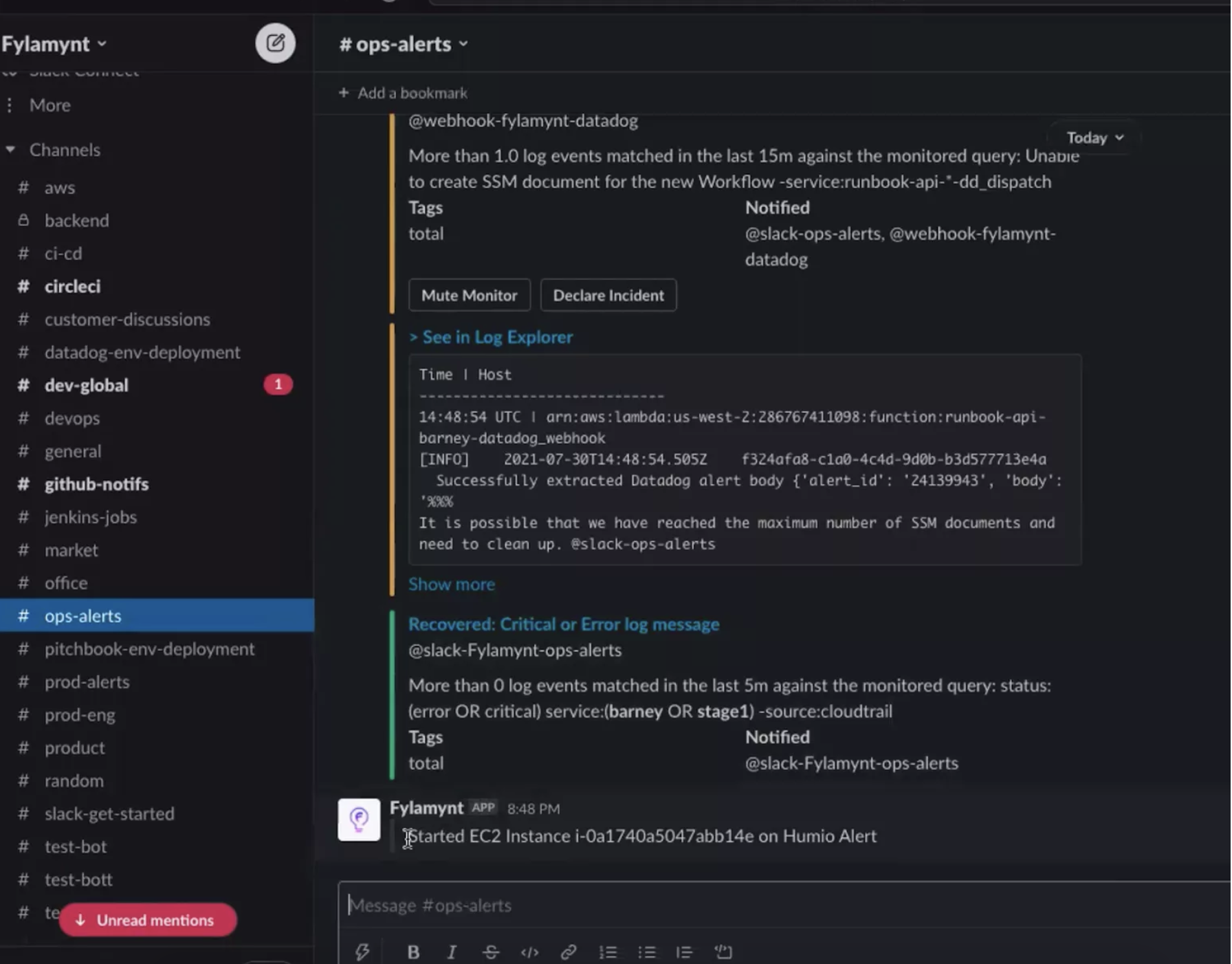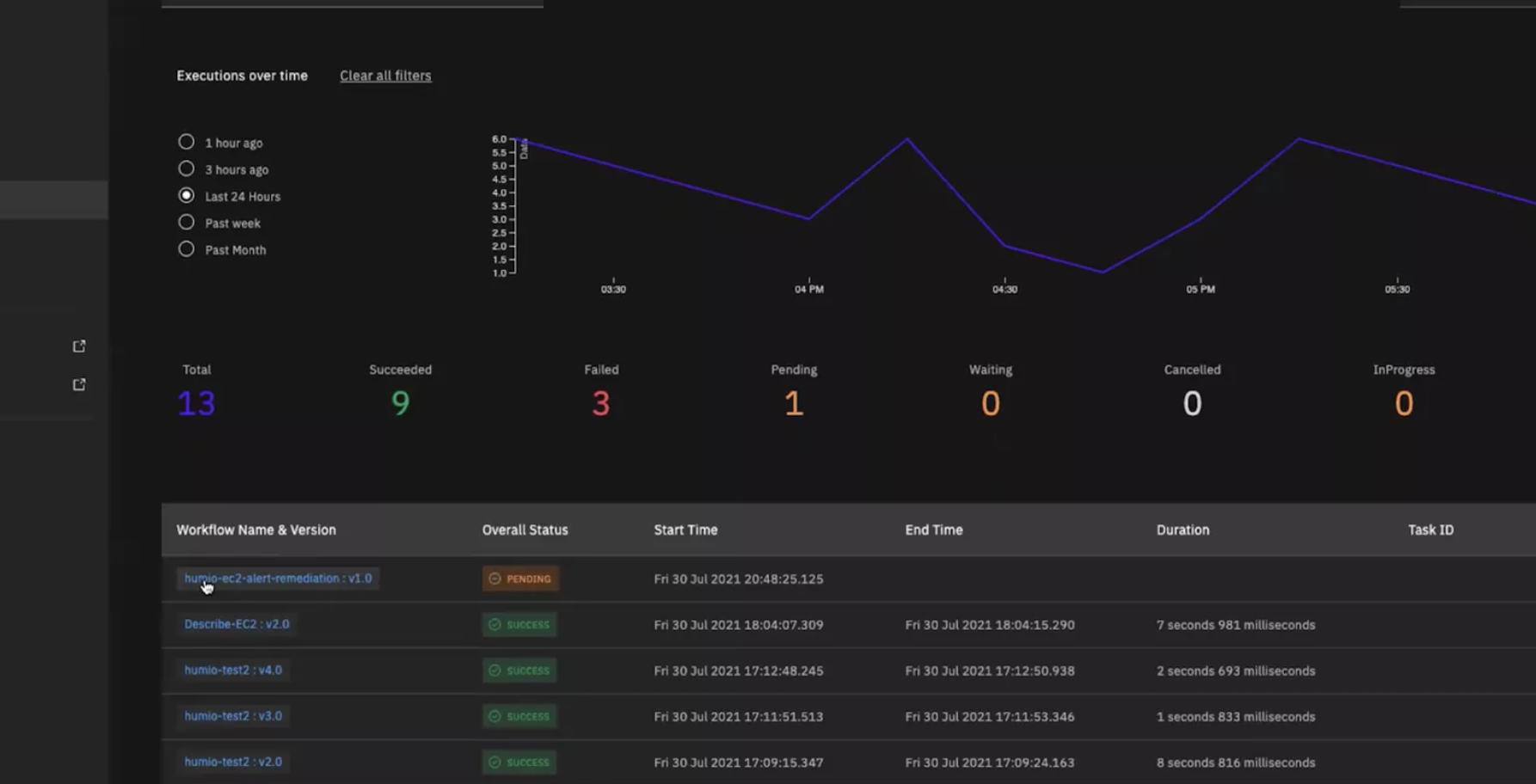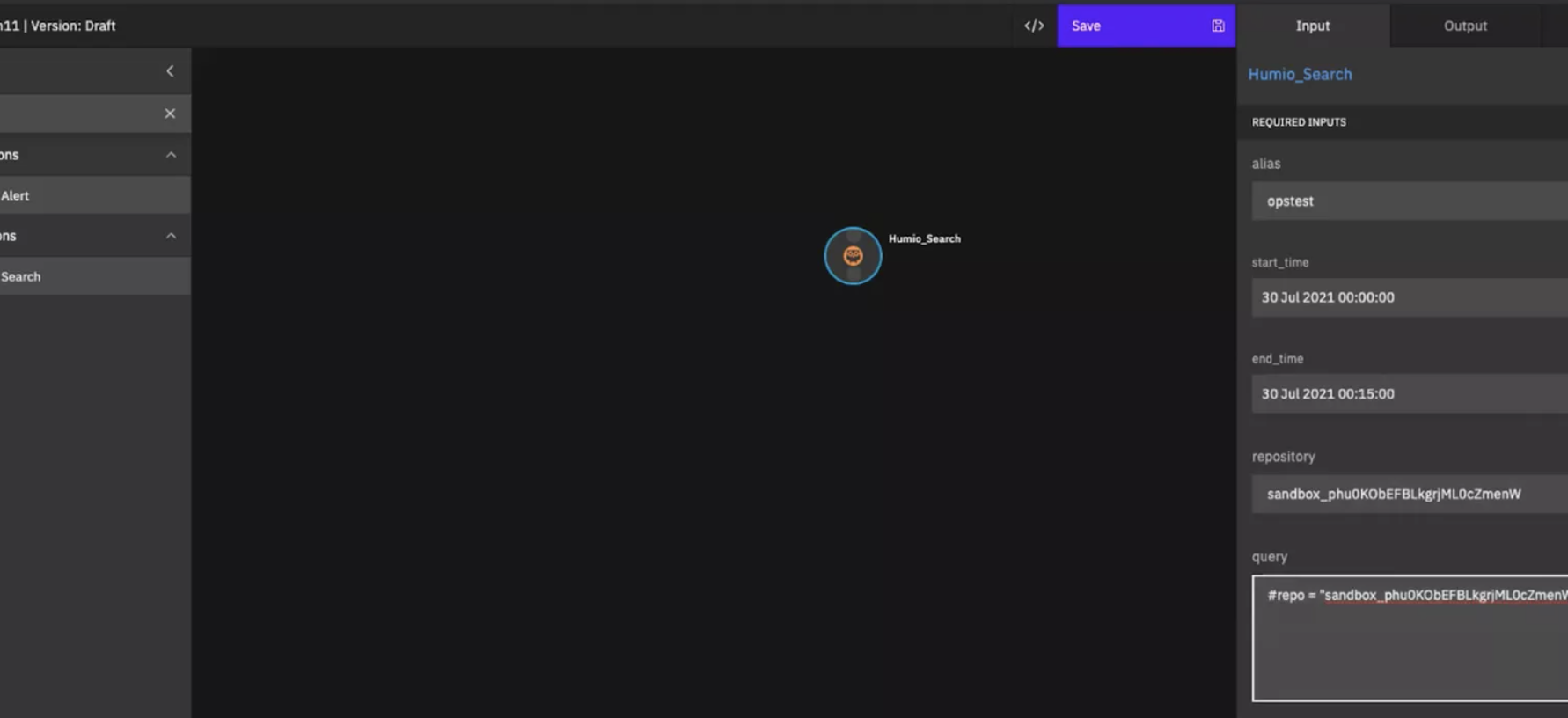This blog was originally published Dec. 2, 2021 on humio.com. Humio is a CrowdStrike Company.
A new API integration for Humio and Fylamynt helps joint customers improve the efficiency of their cloud operations teams by automating repetitive and manual operations tasks. Fylamynt, a low-code platform that delivers a developer’s approach to ITOps with site reliability engineering (SRE), works with Humio to empower faster response times to critical operational issues, reduce human error and increase productivity so DevOps teams can focus on adding value through innovation. The two-way integration means, within the Fylamynt interface, customers can now click to pull in rawlogs
from Humio that are relevant to a particular issue and are needed for detailed analysis and investigation. Fylmaynt receives Humio alerts through an API call and can execute common, repetitive tasks such as restarting critical EC2 instances, remediating resource bottlenecks, maintaining resources and sending communications to key stakeholders. This results in faster resolution of issues, as engineers have streaming data at their fingertips through a single interface.
Why automation is essential for cloud operations
Cloud automation reduces operational costs and errors
Cloud automation workflows with Fylamynt and Humio reduce the amount of hands-on effort needed to manage cloud operations. Users can schedule routine processes to run automatically, freeing up operational resources. Fewer manual processes also mean fewer errors, which lead to less time spent diagnosing and debugging issues.Cloud automation drives innovation
Streamlining and reducing repetitive tasks means developers can focus on improving processes, building new features and solving urgent problems instead of performing routine fixes or daily housekeeping.Cloud automation helps with timely risk management
Calculating the amount of risk associated with an incident or resource through Fylamynt is also a crucial element; it helps with the first degree incident triage and containment. It’s also important for an SRE to correctly prioritize incidents based on the associated risk or damage. The bi-directional integration between Humio and Fylamynt has many potential use cases, but two of the most obvious are, first, to have Humio alerts trigger automated operational tasks in a cloud environment and, second, to have Fylamynt detections enriched with detailed logs pulled from Humio. A summary of these two use cases is covered below:Humio alert triggers automated Fylamynt cloud operations tasks
Let’s start with a simple example based on Humio identifying potential downtime and Fylamynt responding to the alert by triggering an automated workflow. In this cloud automation scenario, Humio sends an alert on potential downtime related to a critical EC2 instance to Fylamynt. Once Fylamynt gets the alert, a workflow is triggered, and as part of the first step, Fylamynt generates a Jira ticket to inform the CloudOps team of a high-priority incident regarding this instance. Example of creating a response workflow in Fylaymnt
Example of creating a response workflow in Fylaymntcommand on the stopped EC2 instance. If the EC2 instance is successfully restarted, Fylamynt then sends a Slack message to the CloudOps team informing them that an EC2 instance was started based on a Humio alert.
 Example slack notification generated by Fylamynt
Example slack notification generated by Fylamynt Summary dashboard of executions in Fylamynt
Summary dashboard of executions in FylamyntAutomated enrichment of Fylamynt with Humio logs
The second use case involves triggering a Humio search from the Fylamynt interface for a snapshot of logs generated within a certain period for troubleshooting purposes. This simple-looking action can provide a lot of value when paired with an alert that needs to be enriched. Adding context automatically to an alert and making data-driven decisions will help the responder prioritize tasks and also filter out false positives. Fylamynt queries a particular Humio repository, retrieves the logs over the relevant time period and stores the logs to an S3 bucket. Developers can customize the search criteria for a specific time period. For example, the picture below features a 15-minute time period on July 30, 2021. Example of configuring a search trigger in Fylamynt to search Humio for all relevant logs in a 15-minute window
Example of configuring a search trigger in Fylamynt to search Humio for all relevant logs in a 15-minute windowEnabling the Humio and Fylamynt integration
Implementing this integration requires only a few simple configuration steps in both Humio and Fylamynt. The integration is free to use. For details on how to set up the integration, please refer to this article in the Fylamynt documentation library, which includes simple, step-by-step instructions. The Humio documentation library has a corresponding brief explanation here.Additional resources
- Access Humio Community Edition, the industry’s largest no-cost log management platform
- Experience Fylamynt’s free trial to see what cloud operation automation can do for your team
- See additional technology integrations for Humio
- Find out more about
Humio for DevOps






![Helping Non-Security Stakeholders Understand ATT&CK in 10 Minutes or Less [VIDEO]](https://assets.crowdstrike.com/is/image/crowdstrikeinc/video-ATTCK2-1?wid=530&hei=349&fmt=png-alpha&qlt=95,0&resMode=sharp2&op_usm=3.0,0.3,2,0)
![Qatar’s Commercial Bank Chooses CrowdStrike Falcon®: A Partnership Based on Trust [VIDEO]](https://assets.crowdstrike.com/is/image/crowdstrikeinc/Edward-Gonam-Qatar-Blog2-1?wid=530&hei=349&fmt=png-alpha&qlt=95,0&resMode=sharp2&op_usm=3.0,0.3,2,0)




















































